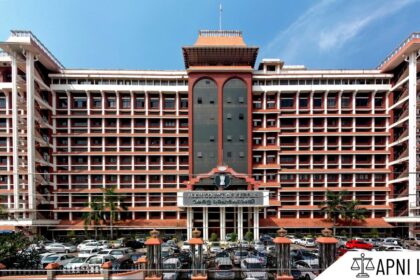What Is the Composition of the Supreme Court of India?
The composition of Supreme Court of India includes the Chief Justice of India and up to thirty-three other judges, giving it a total sanctioned strength of thirty-four. Judges retire at the age of sixty-five, which ensures a regular turnover while preserving judicial stability. The Court operates at its full strength as of mid-2025, after three new judges, Justices N.V. Anjaria, Vijay Bishnoi, and A.S. Chandurkar, took the oath.
Who Heads the Supreme Court?
As of November 2025, Chief Justice Bhushan Ramkrishna Gavai leads the Supreme Court. He became the 52nd Chief Justice on 14 May 2025. His appointment reflects his seniority and experience, and he will continue in this role until his retirement later in the year.
How Are Supreme Court Judges Appointed?
Judges of the Supreme Court are appointed through India’s collegium system. A collegium typically consists of the Chief Justice and the four senior-most judges. They recommend names to the President of India, who formalizes the appointment. This process ensures that appointees are carefully vetted and widely agreed upon within the judiciary.
What Are the Qualifications to Become a Supreme Court Judge?
To become a Supreme Court judge, a person must be an Indian citizen. They must have either served as a High Court judge for at least five years or practiced as an advocate in a High Court for at least ten years. Alternatively, the President can appoint someone they consider a “distinguished jurist.” These requirements ensure that judges bring deep legal experience to the highest court.
How Long Do Supreme Court Judges Serve?
Supreme Court judges do not have fixed terms. They remain in office until they reach the age of sixty-five. They can also be removed before that only through impeachment by Parliament, and only for proven misbehaviour or incapacity. This system protects judicial independence by ensuring that judges are not removed arbitrarily.
Why Does the Court’s Composition Change Over Time?
The composition of the Supreme Court changes regularly because of retirements, new appointments, and occasional vacancies. For example, in 2025, three judges were sworn in to fill the vacancies left by the retirement of former Chief Justice Sanjiv Khanna and two other justices. These changes reflect both the dynamic nature of the judiciary and the constant effort to maintain a full bench.
How Did the Supreme Court Reach Its Current Strength?
Originally, the Constitution of India allowed for just eight judges (including the Chief Justice). Over time, Parliament amended the number to respond to increasing case loads. It raised the number to 11, then 14, later to 26, then 31, and finally to 34 in 2019. The increase aims to help the Court manage more cases and form larger benches (constitution benches) when needed.
What Is the Court’s Jurisdiction and Power?
The Supreme Court of India holds very broad and powerful powers under the Constitution. Under Article 32, citizens can approach it directly to enforce their fundamental rights. Under Article 136, the Court has discretionary power to grant special leave to appeal, allowing it to hear cases that warrant exceptional treatment. Under Article 142, the Court can pass any order necessary for “complete justice.” Decisions that the Supreme Court makes set binding precedents for all other courts in India under Article 141.
How Does the Court Structure Its Work?
The Supreme Court does not always convene as a full bench. For most cases, it sits in smaller benches of two or three judges (called “division benches”). When a case raises a profound legal question, the Court may form a “constitution bench” of five or more judges. These benches decide on fundamental constitutional or legal issues. Over the years, major cases like constitutional challenges have gone before large benches.
What Is the Role of the Collegium System?
The collegium system plays a key role in maintaining judicial independence. The collegium recommends who should be appointed as judges, and it also handles transfers of judges. This system helps separate the judiciary’s appointment power from the executive. It ensures that senior judges, who understand the judiciary’s needs, choose new judges. This process, though criticized at times, seeks to balance competence, seniority, and judicial integrity.
How Diverse Is the Supreme Court?
The Court’s composition shows a mix of backgrounds, though some diversity challenges remain. For example, Chief Justice Gavai is from the Buddhist community and is only the second Dalit to hold the office. According to recent data, there are three women judges in the Court as of mid-2024. The representation of different regions, castes, and backgrounds continues to evolve as more appointments are made.
How Does the Supreme Court Help Manage Case Backlog?
One of the reasons for increasing the number of judges was to tackle the huge backlog of cases in India’s courts. A greater number of judges helps the Supreme Court hear more cases and refer important ones to constitution benches. The Court also relies on its discretion under Article 136 to decide which cases need urgent attention. Because its decisions serve as binding precedents, they can help streamline how cases are handled across the judiciary.
How Is the Court’s Administrative Work Managed?
The Supreme Court runs under rules made in the Supreme Court Rules, 2013, and a “Handbook on Practice and Procedure.” These rules determine how cases should be filed, listed, and argued. The Court’s Registry handles daily case management and administrative tasks. It also supports judges by preparing cause lists, coordinating hearings, and maintaining records. The Court functions primarily in English for its proceedings.
What Checks Exist on Supreme Court Power?
Even though the Supreme Court has enormous power, it remains accountable. Judges retire at sixty-five, and they can be removed only via impeachment by Parliament. The collegium system adds another check: only a majority of the top judges can recommend appointments. Moreover, the Court’s decisions are rooted in law and precedent, and it must justify its use of discretionary powers under Articles 136 and 142. These safeguards help prevent arbitrary use of judicial authority.
What Challenges Does the Supreme Court Face?
Despite its strength, the Court faces important challenges. The broader Indian judicial system has a significant shortage of judges, particularly in High Courts and district courts. This shortage contributes to delays and a rising backlog of cases. Pendency of cases remains a serious problem in India’s judiciary, affecting access to justice. Some critics also question the transparency and democratic legitimacy of the collegium system, and there is an ongoing debate about reforming judicial appointments.
Why Is the Supreme Court So Important for India’s Democracy?
The Supreme Court serves as the guardian of the Constitution. It protects fundamental rights, resolves high-stakes legal disputes and ensures justice for citizens. Its power under Articles 32, 136, and 142 gives it the means to correct wrongs, even when other institutions fail. By issuing binding judgments, the Court shapes the country’s legal landscape and keeps other branches of government in check. With a full bench of thirty-four judges, the Court can handle more work, form constitution benches, and respond more effectively to complex constitutional issues.
Conclusion
The Supreme Court of India operates with a full strength of thirty-four judges, led by Chief Justice B. R. Gavai. Judges serve until the age of sixty-five and join the Court through a collegium-based appointment process. The Court handles critical constitutional questions and protects citizens’ fundamental rights. Its structure balances power, expertise and accountability. Even as it tackles its many challenges, the Supreme Court remains central to India’s democracy, offering fairness, continuity, and deep legal wisdom.








